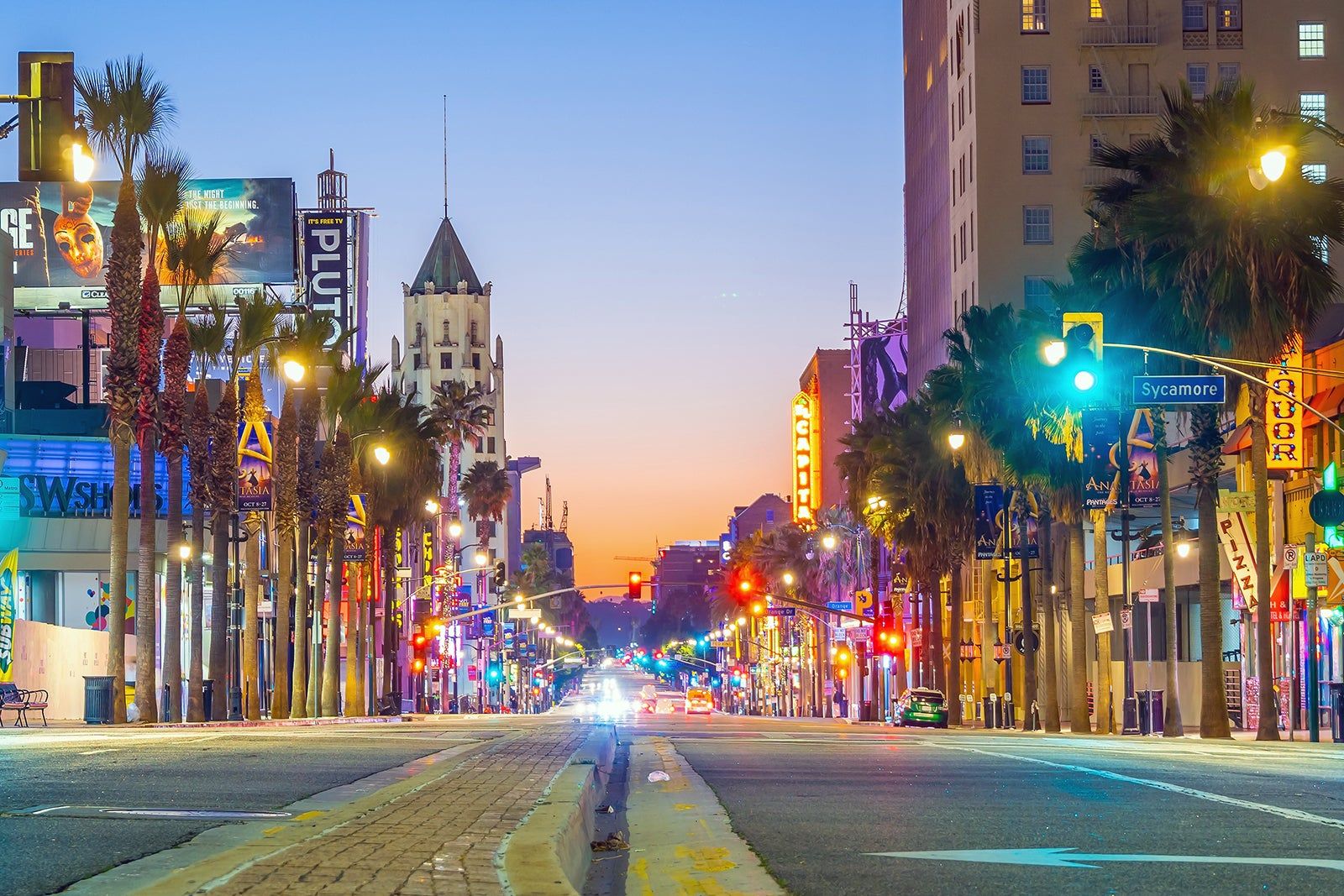
The world of classic car collecting, long perceived as a bastion of steady appreciation and nostalgic investment, is currently undergoing a fascinating and significant transformation. Far from a static realm, this dynamic investment landscape, valued at USD 39.7 billion in 2024 and projected to reach USD 77.8 billion by 2032, is experiencing a nuanced story of growth intertwined with notable corrections. Recent market data, including the Hagerty Market Rating moving into the 50s for only the second time in 13.5 years, signals a “flat” market, challenging the long-held assumption that all classics are destined to rise in value.
Economic pressures, coupled with a discernible shift in buyer demographics and the escalating burden of maintenance costs, are collectively dampening demand for a number of pre-1980s classics. Automotive expert Lauren Fix of Car Coach Reports aptly notes that a younger generation of collectors is increasingly gravitating towards modern classics from the 1980s and 1990s, consequently leaving older, often high-maintenance, vehicles in their wake. This generational pivot is a crucial factor, as it reshapes the very foundation of what constitutes a desirable classic.
The current climate of inflation and uncertain consumer confidence further compels buyers to be more discerning, especially when faced with continuously climbing restoration expenses. A comprehensive 2024 WCShipping report, which draws on data from Hagerty and Classic Valuer, underscores this trend by revealing that almost half of classic car models have experienced a value decline ranging from 10% to 20%. This report serves as a stark reminder that while the market continues to expand overall, selective depreciation is a very real phenomenon that demands careful attention from both enthusiasts and investors. We delve into several iconic models that are expected to see the steepest price drops in the coming months, dissecting the underlying reasons behind these shifts.
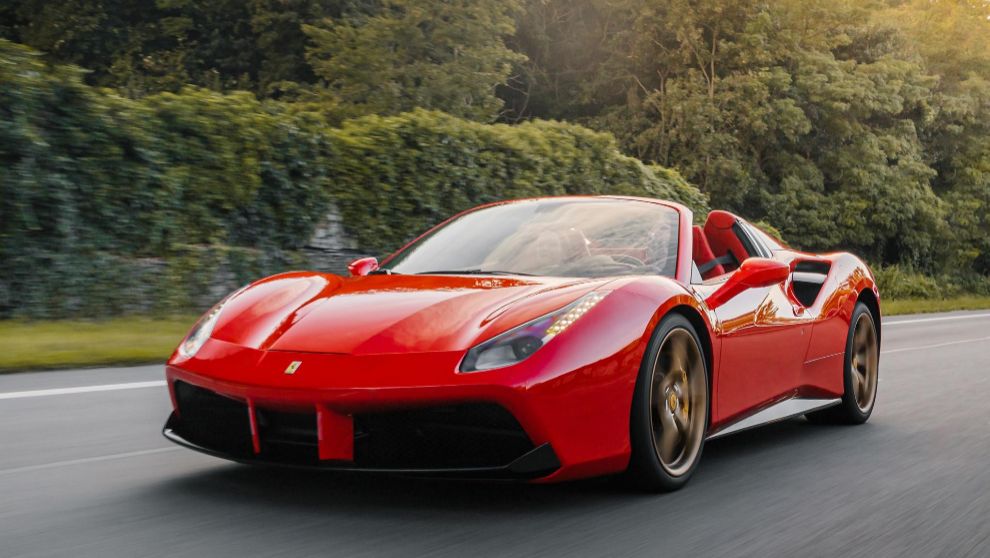
1. **Ferrari 308/328 (1975-1989)**Once quintessential symbols of 1980s automotive style and famously featured in popular television series, the Ferrari 308 and 328 are now navigating a significant market correction. These iconic models, which for years represented an aspirational entry into Ferrari ownership, are finding themselves at a crossroads as collector preferences evolve. The allure of their distinctive Pininfarina lines and the intoxicating sound of their V8 engines remains, yet the market dynamics are undeniably shifting beneath their sleek, composite bodies.
Contemporary collectors are increasingly setting their sights on either rarer, more exclusive Ferraris from earlier eras, or making the leap to more modern and technically advanced 1990s models, such as the venerated F355. This migration of interest has inevitably resulted in a diminished pool of potential buyers for the 308 and 328. “Classic Cars Magazine” further elaborates on this trend, citing that a substantial oversupply of these models, particularly mid-tier and driver-quality examples, combined with their notoriously high maintenance costs, is a potent combination pushing prices firmly downwards.
Lauren Fix provides a tangible outlook, projecting that the average prices for the Ferrari 308 are likely to recede from their current range of $60,000-$100,000 to a more accessible $45,000-$75,000. She specifically highlights that non-concours examples, which represent the majority of the market, are poised to experience the most precipitous declines. This emerging market reality, while perhaps disconcerting for current owners, presents a compelling opportunity for ardent Ferrari enthusiasts. For those who have long dreamed of owning a piece of Maranello history, this summer could usher in some of the most attractive deals on these classic Ferraris in recent memory, especially as sellers become more motivated to reduce their inventory.
_(cropped).jpg/653px-Aston_Martin_DBS_-_Flickr_-_Alexandre_Pr%C3%A9vot_(11)_(cropped).jpg)
2. **Aston Martin DB4/DB5/DB6 (1958-1970)**The Aston Martin DB4, DB5, and DB6 series have long stood as the epitome of British automotive luxury and performance, with the DB5, in particular, achieving legendary status through its indelible association with James Bond. These vehicles represent a bygone era of sophisticated craftsmanship and sporting prowess, embodying a unique blend of elegance and raw power. Yet, even these automotive titans are not immune to the shifting tides of the classic car market.
The intense demand for these high-maintenance, high-cost vehicles is noticeably softening, driven by a new generation of collectors who are increasingly drawn to more modern and, crucially, more affordable classics. Chris Pyle, an auto mechanic and JustAnswer expert, points out a broader trend: “non-American classics normally see price drops because they are less looked at by potential buyers,” suggesting a shift in mainstream collector focus that impacts even the most revered European marques.
Furthermore, the once-unassailable allure of the DB5 has begun to soften as the market itself has become saturated with numerous restored examples. While restoration is often seen as a virtue, an overabundance can dilute exclusivity and push prices down. As a direct consequence of these factors, significant price drops are anticipated across the entire DB series, with only the rarest, truly concours-quality cars likely to maintain their premium valuations. For discerning buyers, this summer could very well represent an unprecedented opportunity to acquire a legendary Aston Martin at a relative bargain, a chance that has not presented itself in years.
Car Model Information: 2018 Mercedes-Benz E-Class E 300
Name: Aston Martin DB5
Manufacturer: Aston Martin
Production: 1963–1965 (1,059 units),2020 (25 units)
Assembly: Newport Pagnell,England
Designer: Carrozzeria Touring Superleggera
Class: Grand tourer
BodyStyle: coupé
Layout: Front-engine, rear-wheel-drive layout
Engine: DOHC,Straight-6,3995 cc
Order: flip
Abbr: on
Powerout: convert
Transmission: ZF Friedrichshafen
Length: 4570 mm
Width: 1680 mm
Wheelbase: 98.0 in
Predecessor: Aston Martin DB4
Successor: Aston Martin DB6
Doors: 2
Weight: 3311 lb
Sp: uk
Categories: Articles with short description, Aston Martin vehicles, CS1: unfit URL, Cars discontinued in 1965, Cars introduced in 1963
Summary: The Aston Martin DB5 is a British grand tourer (GT) produced by Aston Martin and designed by Italian coachbuilder Carrozzeria Touring Superleggera. Originally produced from 1963 to 1965, the DB5 was an evolution of the final series of DB4. The “DB” designation is from the initials of David Brown who built up the company from 1947 onwards.
The DB5 is best-known for its role in the James Bond films. It was first driven by the fictional spy in the film Goldfinger (1964). In 2013, the car featured on a “British Auto Legends” postage stamp issued by the Royal Mail.
Get more information about: Aston Martin DB5
Buying a high-performing used car >>>
Brand: Aston Martin Model: DB5
Price: $19,544 Mileage: 57,939 mi.
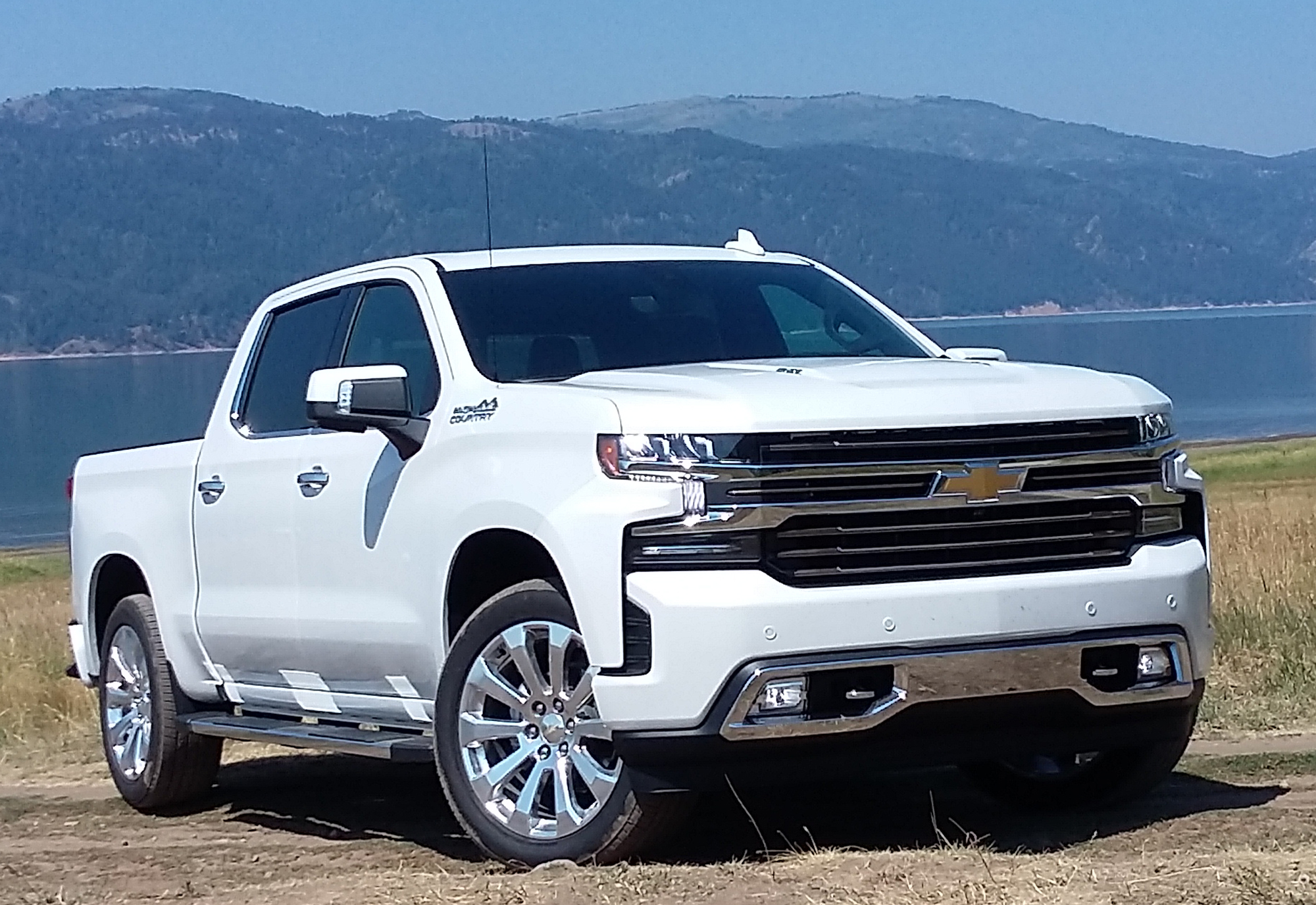
3. **Chevrolet Corvette C3 (1968-1982)**The Chevrolet Corvette C3, a revered staple among American muscle car aficionados, is currently experiencing a period of softening demand and consequently, falling prices in 2025. With its distinctive “coke bottle” styling and powerful V8 engine options, the C3 has historically been a popular choice for those seeking an authentic slice of American performance. However, several factors are now converging to challenge its market position.
A significant contributor to this decline is an oversupply of lower-quality examples in the market. As the enthusiasm for the C3 has matured, the sheer volume of cars, many of which are not in pristine condition, has diluted their overall value. Compounding this issue is a noticeable shift in collector interest towards newer iterations, specifically the C4 and C5 models, which offer superior performance and a more attractive value proposition in the contemporary classic car landscape. Hagerty’s auction data corroborates this trend, indicating that muscle cars like the C3 are lagging in appreciation when compared to modern classics, a situation exacerbated by prevailing economic uncertainty making buyers more cautious with their investments.
Lauren Fix offers specific projections for the C3 market, expecting that non-Stingray or high-mileage examples will experience a depreciation of 10-20 percent in value. This translates to average prices potentially falling from $20,000-$30,000 to a range of $15,000-$25,000. For those with a keen eye for a classic American sports car and who are not necessarily seeking a show-quality Stingray, this summer could present an ideal window to acquire a C3 at a substantial discount. It’s a chance to own an iconic piece of American automotive heritage, but at a price point that reflects the current market recalibration.
Car Model Information: 2018 Mercedes-Benz E-Class E 300
Name: Chevrolet Corvette (C3)
Caption: 1973 Chevrolet Corvette Stingray
Manufacturer: Chevrolet
Aka: Chevrolet Corvette Stingray,(1968–76)
Production: August 1967 – October 1982
ModelYears: 1968–82
Platform: General Motors Z platform
Assembly: St. Louis Truck Assembly,Bowling Green Assembly Plant
Predecessor: Chevrolet Corvette (C2)
Successor: Chevrolet Corvette (C4)
Class: Sports car
BodyStyle: Convertible (car),coupé
Layout: Mid-engine design
Engine: {{cvt,305,cuin,L,1,Chevrolet small-block engine (first- and second-generation)#LG4,V8 engine
Transmission: manual transmission,manual transmission,Turbo-Hydramatic,Automatic transmission
Wheelbase: cvt
Length: {{cvt,182.1,in,mm,0
Width: {{cvt,69.2,in,mm,0
Height: {{cvt,47.8,in,mm,0
Weight: cvt
Designer: GM & Chevrolet design staff,Zora Arkus-Duntov,Bill Mitchell (designer)
Categories: 1970s cars, 1980s cars, All articles with unsourced statements, Articles with short description, Articles with unsourced statements from April 2024
Summary: The Chevrolet Corvette (C3) is the third generation of the Corvette sports car that was produced from 1967 until 1982 by Chevrolet for the 1968 to 1982 model years. Engines and chassis components were mostly carried over from the previous generation, but the body and interior were new. It set new sales records with 53,807 produced for the 1979 model year. The C3 was the second Corvette to carry the Stingray name, though only for the 1969–76 model years. This time it was a single word as opposed to Sting Ray as used for the 1963–67 C2 generation. The name was then retired until 2014 when it returned with the release of the C7.
The most expensive Corvette C3 to sell in history was a 1969 L88 Lightweight, one of only four lightweight L88s to be produced. It was sold by Barrett-Jackson in January 2014 for $2,860,000 (£1,728,941).
Get more information about: Chevrolet Corvette (C3)
Buying a high-performing used car >>>
Brand: Chevrolet Model: Corvette C3
Price: $19,544 Mileage: 57,939 mi.
Read more about: Beyond the Showroom: 14 Iconic Classic Cars You Can Restore for Less Than Buying Them
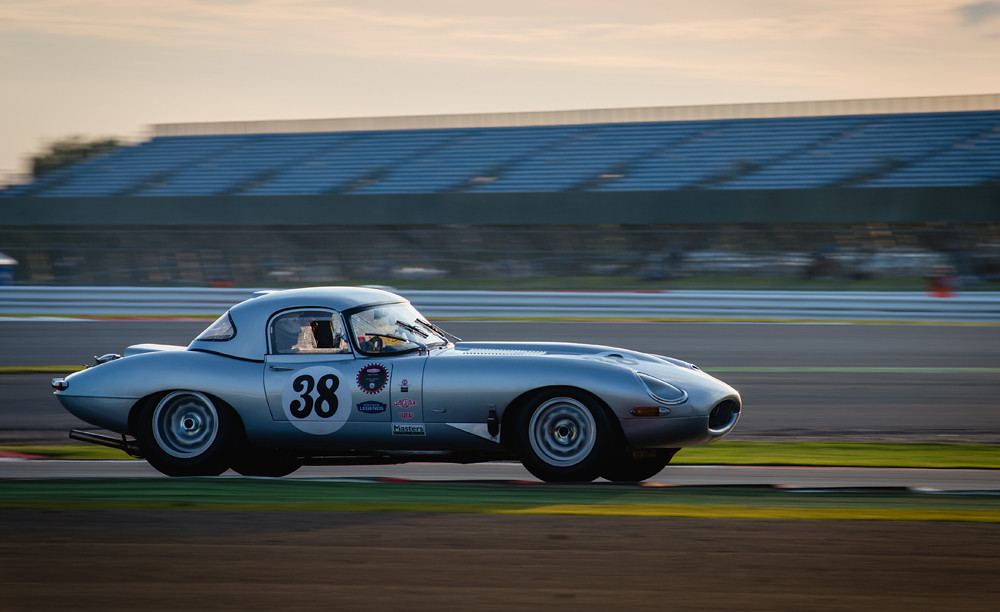
4. **Jaguar E-Type (1961-1975)**The Jaguar E-Type, a vehicle once lauded by none other than Enzo Ferrari as “the most beautiful car ever made,” is now contending with a notable reduction in demand and a corresponding dip in its market prices. This British icon, renowned for its breathtaking aesthetics and advanced engineering for its time, faces a complex set of challenges that are influencing its collector appeal. While its design remains timeless, the practicalities of ownership and evolving market tastes are undeniably impacting its valuation.
Lauren Fix specifically highlights that the less desirable Series II and III E-Types, particularly coupe variants and those less pristine convertibles, could see a price decrease of 15-20%. This segmentation of the market indicates that not all E-Types are created equal in the eyes of current collectors. The confluence of high maintenance costs—a common refrain among classic British sports cars—and a market that has become increasingly saturated with restored examples, makes it difficult for sellers to command the premium prices seen in previous years. The sheer availability of these cars, even after professional restoration, is dampening their perceived scarcity and, by extension, their monetary value.
Furthermore, Jaguar’s strategic rebrand and its pronounced shift towards electric vehicles are having a tangible effect on enthusiasm for its classic models, particularly among younger buyers, as reported by Topgear by BBC. This forward-looking corporate direction, while vital for the company’s future, inadvertently creates a psychological distance from its internal combustion past for a segment of the market. For seasoned collectors and aspiring owners alike, this summer may offer a rare and compelling opportunity to acquire a Jaguar E-Type at a price point that has not been observed in many years, making a legendary piece of automotive artistry more accessible than before.
Car Model Information: 1971 Jaguar E-Type Restomod
Sp: uk
Name: Jaguar E-Type
Caption: 1961 E-Type Series 1 3.8-Litre, the first production model of this open two-seater
Aka: Jaguar XK-E , Jaguar V-12
Manufacturer: Jaguar Cars
Production: 1961–1974
Class: Sports car
Predecessor: Jaguar XK150
Related: Jaguar D-Type,Jaguar XJ13
Successor: Jaguar XJS
Layout: FMR layout
Assembly: Coventry,England
Designer: Malcolm Sayer
Categories: 1970s cars, 2+2 coupés, All articles with dead external links, All articles with specifically marked weasel-worded phrases, All articles with unsourced statements
Summary: The Jaguar E-Type, or the Jaguar XK-E for the North American market, is a British front mid-engined sports car that was manufactured by Jaguar Cars Ltd from 1961 to 1974. Its sleek appearance, advanced technologies, high performance, and competitive pricing established it as an icon. The E-Type’s claimed 150 miles per hour (240 km/h) top speed, sub-7-second 0 to 60 mph (97 km/h) acceleration, largely unitary body construction, front and rear independent suspension with disc brakes, mounted inboard at the rear, and rack-and-pinion steering spurred industry-wide changes.
The E-Type was based on Jaguar’s D-Type racing car, which had won the 24 Hours of Le Mans for three consecutive years beginning in 1955.
The E-Type employed what was, for the early 1960s, a novel design principle, with a front subframe carrying the engine, front suspension and front bodywork bolted directly to the body tub. No ladder frame chassis, as was common at the time, was needed and as such the first cars weighed only 1,315 kg (2,899 lb).
It is rumored that, on its debut on 15 March 1961, Enzo Ferrari called it “the most beautiful car ever made”, but this statement is not fully confirmed. In 2004, Sports Car International magazine placed the E-Type at number one on their list of Top Sports Cars of the 1960s. In March 2008, the Jaguar E-Type ranked first in The Daily Telegraph’s online list of the world’s “100 most beautiful cars” of all time.
Get more information about: Jaguar E-Type
Buying a high-performing used car >>>
Brand: Jaguar Model: E-Type
Price: $64,900 Mileage: 2,455 mi.

5. **Porsche 911 (Air-Cooled, 1964-1989)**Air-cooled Porsche 911s have long occupied an almost sacrosanct position within the collector car community, revered for their distinctive flat-six engine note, exceptional driving dynamics, and unwavering build quality. Generations such as the 930 Turbo, 964, and 993 have consistently maintained robust values, and earlier long-hood 911s have stabilized at high levels. However, even within this highly coveted segment, the market is beginning to cool for certain models, particularly those produced between 1964 and 1989.
Hagerty reports that broader economic developments and a noticeable shift in consumer tastes are directly impacting the prices of older, non-iconic air-cooled Porsche 911s. A significant factor in this shift is the rising demand for water-cooled 911s, which, in a comparative analysis, offer more modern performance and amenities. This evolving preference indicates a maturation of the collector base, with some buyers prioritizing a more contemporary driving experience over the traditional air-cooled mystique. Coupled with the inherent maintenance costs associated with these classic vehicles and a market that has become somewhat saturated with high-mileage or less rare examples, downward pressure on prices is increasingly evident.
Lauren Fix’s projections for this specific segment of the market are insightful, anticipating that base models or driver-quality air-cooled 911s could see a drop of 10-15 percent. This would translate to prices potentially receding from the $40,000-$70,000 range to a more approachable $35,000-$60,000. For enthusiasts who have long admired the engineering excellence and racing heritage of Porsche, but found the entry barrier too high, this summer could indeed be the opportune moment to finally own a classic air-cooled 911 at a more accessible price point. It represents a recalibration within a historically strong market, offering new avenues for passionate ownership.
The first section peeled back the curtain on several iconic vehicles experiencing a market correction. Our journey now continues, focusing on additional classic cars facing similar depreciative trends, complemented by an essential look at the broader forces shaping the entire classic car market. Understanding these overarching dynamics is not merely academic; it’s fundamental for anyone navigating the intricate world of vintage automobiles.
Car Model Information: 2024 Porsche 911
Name: Porsche 911
Caption: The 1 millionth 911 produced on display at Volkswagen Group Forum, Berlin
Designer: Ferdinand Alexander Porsche
Manufacturer: Porsche
Production: September 1964 – present
Assembly: Stuttgart,Baden-Württemberg
Class: Sports car
BodyStyle: unbulleted list
Related: unbulleted list
Layout: Rear-engine design,rear-wheel drive
Predecessor: Porsche 356
Categories: 1970s cars, 1980s cars, 1990s cars, 2+2 coupés, 2000s cars
Summary: The Porsche 911 model series (pronounced Nine Eleven or in German: Neunelf) is a family of German two-door, high performance rear-engine sports cars, introduced in September 1964 by Porsche AG of Stuttgart, Germany. Now in its eighth generation, all 911s have a rear-mounted flat-six engine, and usually 2+2 seating, except for special 2-seater variants. Originally, 911s had air-cooled engines, and torsion bar suspension, but the 911 has been continuously enhanced, and evolved across generations. Though the 911 core concept has remained largely unchanged, water-cooled engines were introduced with the 996 series in 1998, and front and rear suspension have been replaced by Porsche-specific MacPherson suspension up front, and independent multi-link rear suspension.
The 911 has been raced extensively by private and factory teams, in a variety of classes. It is among the most successful competition cars. In the mid-1970s, the naturally aspirated 911 Carrera RSR won world championship races including Targa Florio and the 24 Hours of Daytona. The 911-derived 935 turbo also won the 24 Hours of Le Mans in 1979. Porsche won the World Championship for Makes in 1976, 1977, 1978, and 1979 with 911-derived models.
In a 1999 poll to determine the Car of the Century, the 911 ranked fifth — one of two in the top five that had remained continuously in production (the original Beetle remained in production until 2003). The one millionth example was manufactured in May 2017 and is in the company’s permanent collection.
Get more information about: Porsche 911
Buying a high-performing used car >>>
Brand: Porsche Model: 911
Price: $242,888 Mileage: 6,944 mi.
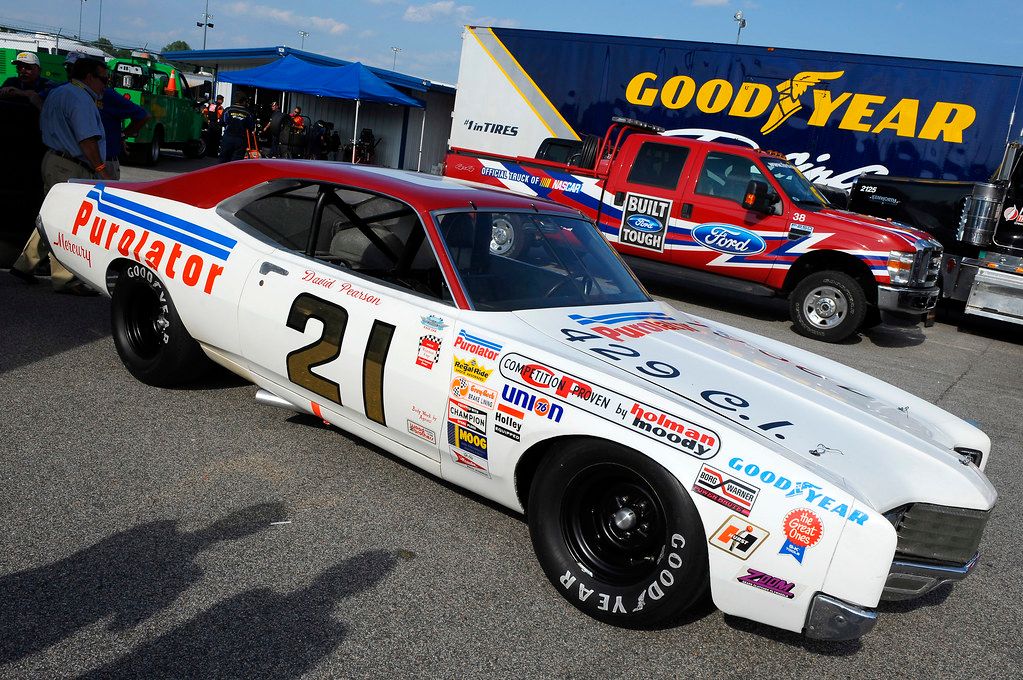
6. **Mercury Cyclone** The Mercury Cyclone, a formidable name from the golden age of American muscle, is unfortunately poised for significant price drops this summer. Reports from VintageCarCollector.com indicate an estimated 15% decline in its value based on recent auction performance. This shift highlights a critical factor: the Cyclone often takes a backseat to more renowned models like the Mustang and Charger in terms of brand visibility and established recognition.
Melanie Musson, an automotive expert with AutoInsurance.org, observes, “When the market for muscle cars was booming, the Cyclone was popular; however, the market has since slowed and the Cyclone doesn’t have the same level of following as the more well-known makes and models.” She concludes that “As a result, it’s lost demand and when there’s less demand, the price will inevitably decrease.”
For those who appreciate unadulterated American power and a distinctive aesthetic, these anticipated price adjustments present a compelling entry point. Discerning buyers could find an advantageous opportunity to acquire a robust piece of muscle car history without the premium price tags of yesteryear, securing a powerful classic rich in character at a more accessible valuation.
Read more about: The Generational Shift: 12 Boomer Classic Cars Millennials Are Passing On, and the Data Behind Their Disinterest
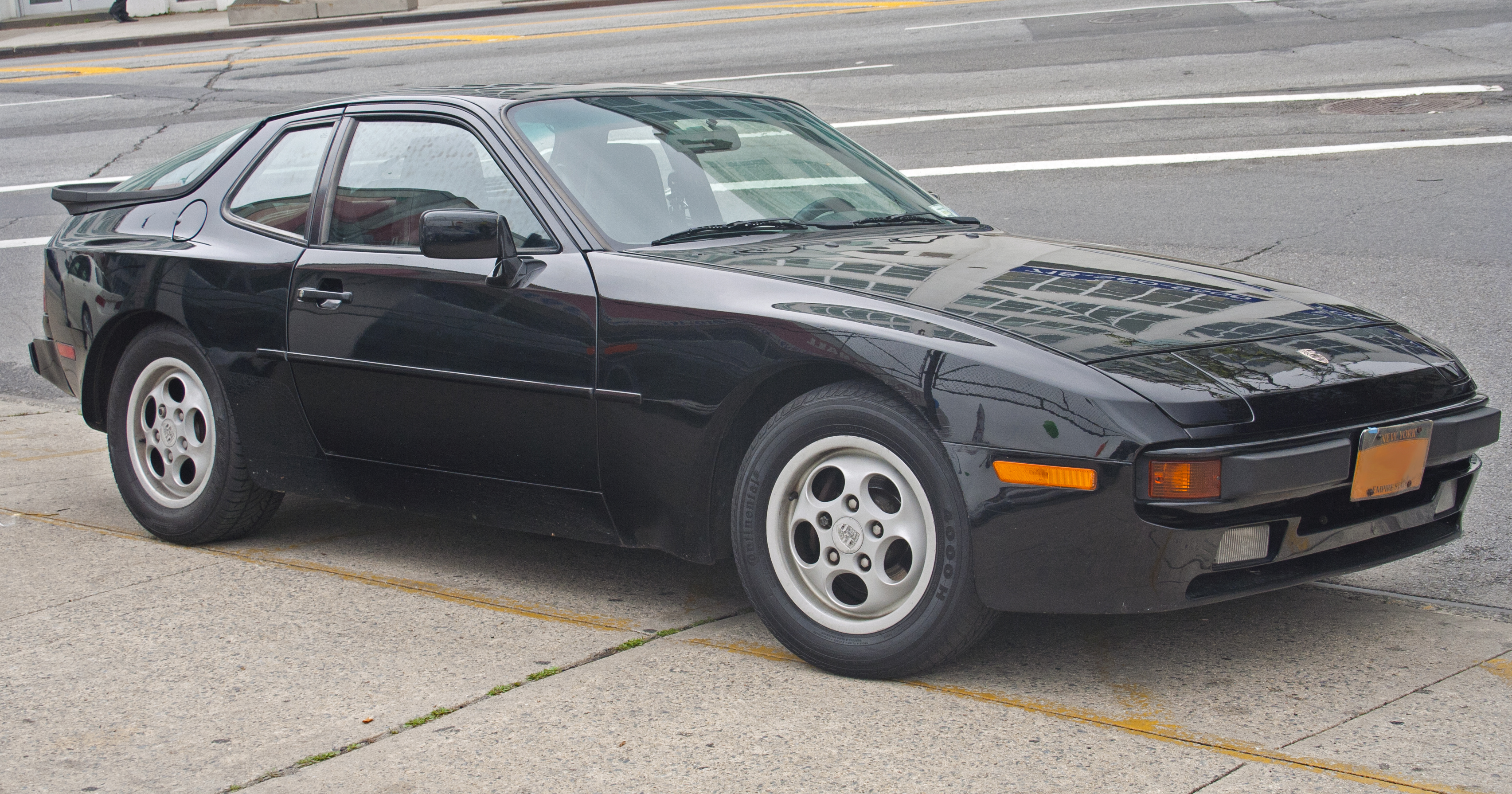
7. **1980s Porsche 944** Transitioning to German precision, the 1980s Porsche 944 is also expected to face notable price drops by fall 2025. This front-engine Porsche, known for its superb balance, is contending with unique market pressures, including high parts costs and generally declining current values. Many enthusiasts are now exploring other options.
The 944 experienced a significant surge during the pandemic-era classic car boom, driven by a demand for “affordable Porsches.” However, as that speculative wave recedes, an oversupply of 944 inventory has accumulated. Alex Black, chief marketing officer at EpicVIN, notes, “The mania, however, is slowing down. Parts are expensive and it’s not the most maintenance-easy car. Listings are slower and prices are declining, some even back below the $10,000 price point again.”
This current landscape of softening prices and increased availability creates a favorable environment for prospective buyers. With reduced competition, individuals seeking a well-engineered and engaging classic Porsche will likely discover greater bargaining power. This autumn could be an ideal time to acquire a 1980s Porsche 944 at a significantly more attractive valuation.
Car Model Information: 1990 Porsche 944 S2 Cabriolet
Caption: 1986 944 Turbo (951) US-spec
Name: Porsche 944
Manufacturer: Porsche AG
Class: Sports car
Production: 1982–1991
Layout: Front-engine, rear-wheel-drive layout
Assembly: Neckarsulm,Stuttgart
Designer: Harm Lagaay
Predecessor: Porsche 924
Successor: Porsche 968
BodyStyle: coupé,convertible
Engine: Straight-four engine,Turbocharger,2.7 L M44/12 I4,3.0 L M44/41 I4
Wheelbase: 2400 mm
Abbr: on
Length: 1986–1988: {{convert,4318,mm,in,1,abbr=on
Width: 1735 mm
Height: 1275 mm
Transmission: Automatic transmission,Manual transmission
Weight: Pre-1988: {{convert,1180,kg,lb,0,abbr=on
Categories: 1990s cars, All articles needing additional references, All articles with unsourced statements, Articles needing additional references from September 2024, Articles with short description
Summary: The Porsche 944 is a sports car manufactured by German automobile manufacturer Porsche from 1982 until 1991. A front-engine, rear-wheel drive mid-level model based on the 924 platform, the 944 was available in coupé or cabriolet body styles, with either naturally aspirated or turbocharged engines. With over 163,000 cars produced, the 944 was the most successful sports car in Porsche’s history until the introductions of the Boxster and 997 Carrera.
Extensive design revisions for the 1992 model year prompted Porsche to drop the 944 nameplate and rebrand the vehicle as the 968.
Get more information about: Porsche 944
Buying a high-performing used car >>>
Brand: Porsche Model: 944
Price: $17,900 Mileage: 96,579 mi.
Read more about: Unvarnished Truth: 14 ‘Classic’ American Cars That Delivered Awful Driving Experiences

8. **1970s Cadillac Eldorado** The majestic 1970s Cadillac Eldorado, a symbol of unbridled American luxury, is experiencing the effects of shifting market preferences. These quintessential “land yachts” are witnessing a noticeable decrease in desirability among contemporary collectors, as modern automotive tastes pivot away from such large, stately coupes.
The prevailing trend favors smaller, more agile, and performance-oriented coupes, directly challenging the Eldorado’s market standing. Practical concerns like fuel efficiency and storage also make it a less appealing choice. Alex Black confirms, “Gas and storage are tougher sells nowadays. Unless it’s in mint condition, buyers aren’t exactly falling all over themselves as they were a couple of years ago.”
Despite easing demand, the 1970s Cadillac Eldorado remains a historically significant and impressively styled classic. For those with the capacity for a grand automobile and a genuine appreciation for the era’s automotive grandeur, this fall could present an exceptional opportunity. It’s a chance to own a distinctive piece of American luxury at a significantly reduced acquisition cost.
Car Model Information: 1976 Cadillac Eldorado Convertible
Caption: 1963 Cadillac Eldorado Convertible
Name: Cadillac Eldorado
Manufacturer: Cadillac
Production: 1952–2002
Layout: Front-engine, rear-wheel-drive layout
Aka: Cadillac Fleetwood Eldorado
Class: Personal luxury car
Successor: Cadillac CTS
Categories: 1960s cars, 1970s cars, 1980s cars, 1990s cars, 2000s cars
Summary: The Cadillac Eldorado is a luxury car manufactured and marketed by the Cadillac Motor Car Division of General Motors from 1952 until 2002, over twelve generations.
The Eldorado was at or near the top of the Cadillac product line. The original 1953 Eldorado convertible and the Eldorado Brougham models of 1957–1960 had distinct bodyshells and were the most expensive models offered by Cadillac during those years. The Eldorado was never less than second in price after the Cadillac Series 75 limousine until 1966. Beginning in 1967, the Eldorado retained its premium position in the Cadillac price structure, but was manufactured in high volumes on a unique, two-door personal luxury car platform.
The Eldorado carried the Fleetwood designation from 1965 through 1972, and was seen as a modern revival of the pre-war Cadillac V-12 and Cadillac V-16 roadsters and convertibles.
Get more information about: Cadillac Eldorado
Buying a high-performing used car >>>
Brand: Cadillac Model: Eldorado
Price: $29,499 Mileage: 31,898 mi.
Read more about: Untamed Powerhouses: The 1960s Muscle Cars That Shattered Conventions and Forged a Legacy of Speed
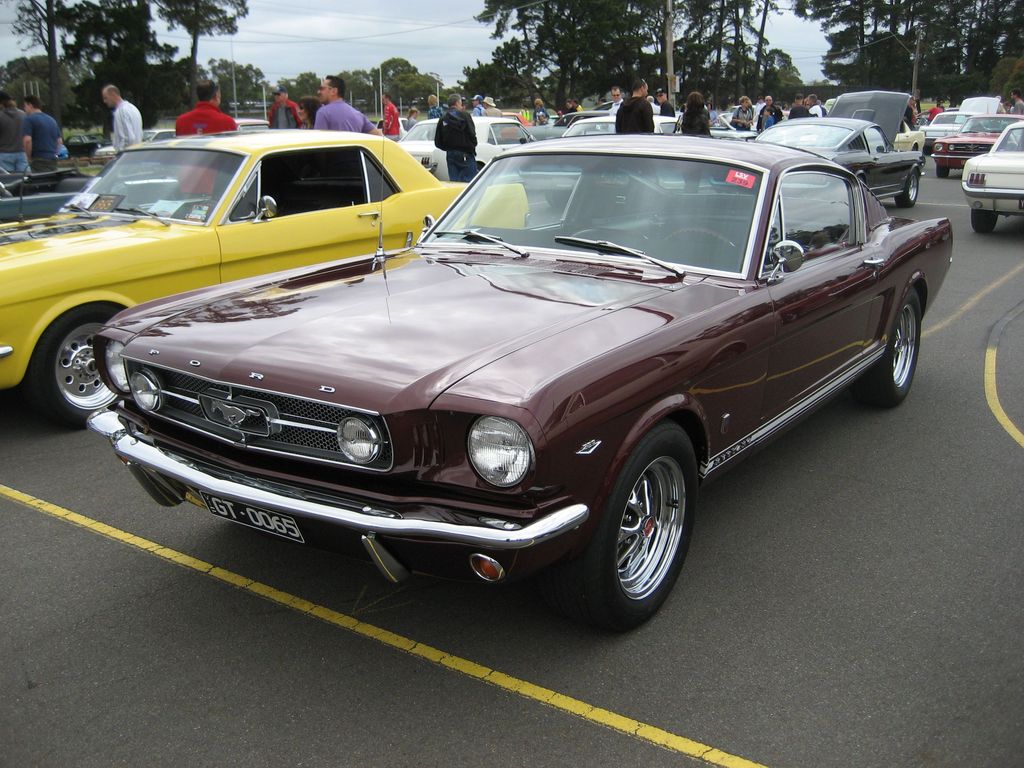
9. **1965 Ford Mustang GT** Even the iconic 1965 to 1966 Ford Mustang GT, a foundational piece of American car culture, is not immune to the classic car market’s current volatility. VintageCarCollector.com reports this popular model is experiencing an approximate 12% loss of value year-over-year. This notable decline for such a beloved classic underscores significant shifts within the collector community.
The primary catalysts for this depreciation are market saturation and evolving collector demand. The sheer volume of 1965 Mustangs produced diminishes the perception of scarcity that often underpins premium classic car values. Simultaneously, collectors are increasingly gravitating towards models with higher specifications and greater exclusivity, such as the coveted GT350s, leaving the more common 1965 GT in a less favorable position.
While rare versions of the 1965 Mustang GT continue to command premium prices, the broader market feels the effects of oversupply. The abundance of standard GT models provides buyers with ample choice and reduces the urgency to pay top dollar. For enthusiasts, the fall of 2025 could be the opportune moment to acquire an excellent deal on this quintessential American automotive history, at a value reflecting current market recalibration.
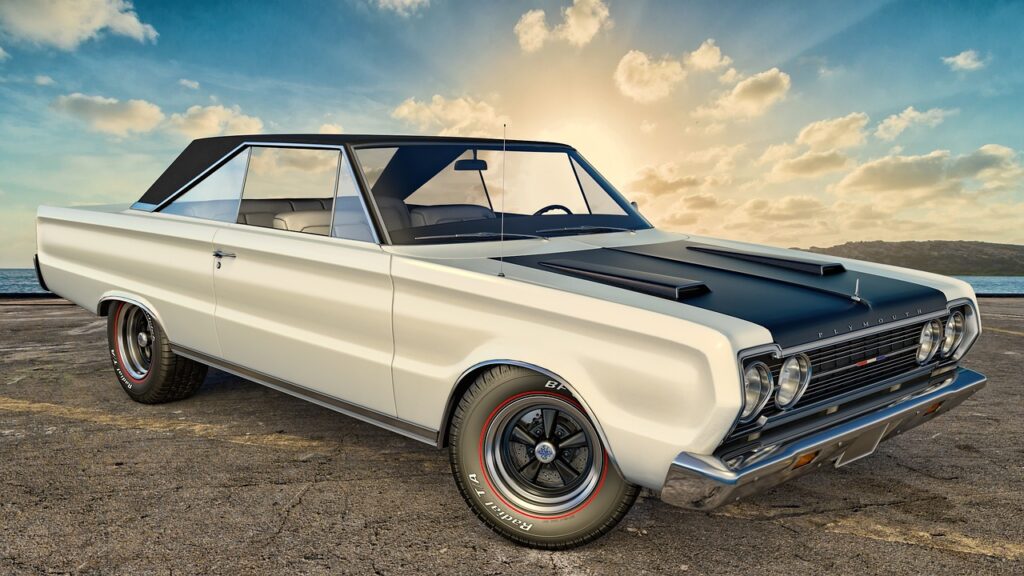
**Declining Segments: Where Values Are Softening**
Beyond individual models, a closer look at the broader classic car market reveals distinct segments consistently facing significant downward pressure. This recalibration isn’t a sign of collapse, but a necessary maturation where unsustainable valuation peaks yield to realistic pricing driven by genuine enthusiasm over speculation.
**American Muscle Cars Face Reality Check**
Traditional American muscle cars, once commanding astronomical valuations, have recently undergone some of the most significant corrections. High-end examples, which fetched incredible prices during the market’s peak, are now experiencing substantial declines. This segment is sensitive to the evolving preferences of a new generation of collectors, attributed to generational change and an oversupply of restored examples. While truly exceptional original examples retain better value, this decline signifies a market correction, not permanent devaluation.
**British Sports Cars Struggling for Relevance**
Classic British sports cars confront considerable challenges in maintaining value appreciation. Models like the MGB, Triumph TR series, and Austin-Healey variants struggle due to persistent reliability concerns and limited performance compared to modern alternatives. While dedicated enthusiasts remain, broader collector interest continues to decline. Their position between truly affordable entry-level classics and serious investment-grade vehicles proves problematic, often demanding significant maintenance expertise. However, the most exceptional examples, particularly those with strong racing histories, continue to find appreciative buyers.
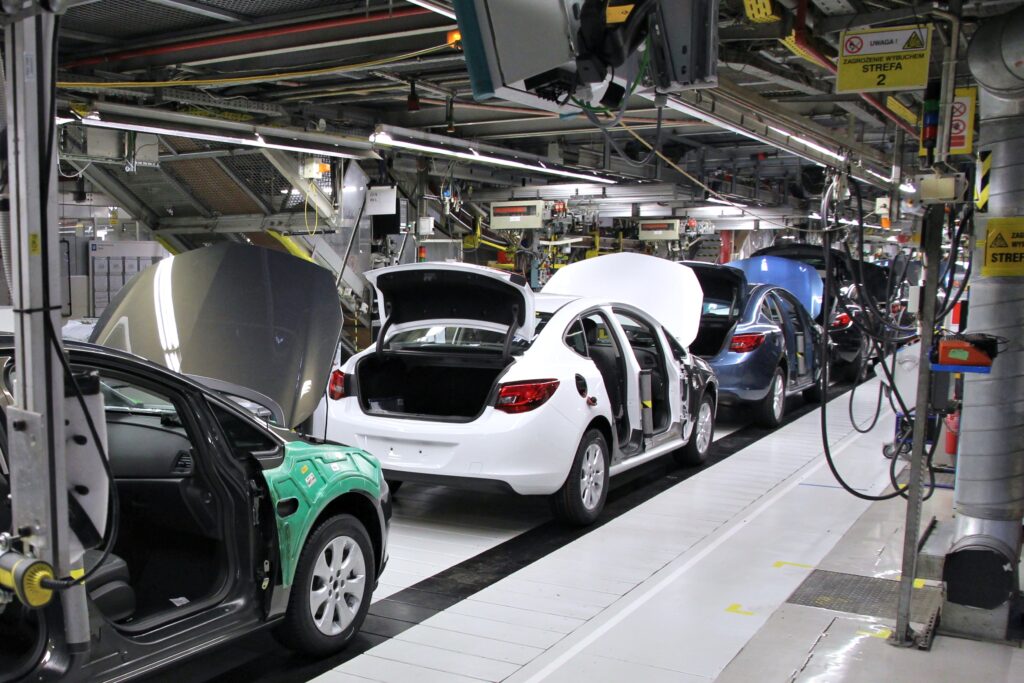
**Mid-Tier Classics Losing Momentum**
Many mid-level classics that enjoyed strong, often speculative, appreciation during market peaks are now facing a stark reality check. These vehicles primarily benefited from broad market enthusiasm rather than deep collector interest or inherent historical significance. Consequently, their values are stabilizing or actively declining as the market becomes more discerning. This correction primarily affects cars acquired as investments, lacking compelling narratives or exceptional engineering. The speculative bubble has burst for many, underscoring that intrinsic value and authenticity are now the ultimate arbiters of a classic car’s worth.
**Investment Strategies for the Current Market**
Navigating today’s nuanced classic car market demands a refined approach from collectors. The era of simply buying any “classic” and expecting guaranteed appreciation is over. Success hinges on informed decisions, a discerning eye, and a deep understanding of evolving market dynamics.
**Focus on Quality Over Quantity**
In the current market, quality is paramount. It unequivocally rewards exceptional examples over average cars. Savvy buyers should prioritize original, meticulously documented vehicles with clear provenance, favoring those that retain factory originality over extensively restored or modified examples. Documentation, including matching numbers and comprehensive service records, carries a significant premium. The market has definitively shifted towards valuing preservation above aggressive restoration, emphasizing authenticity for long-term value retention.
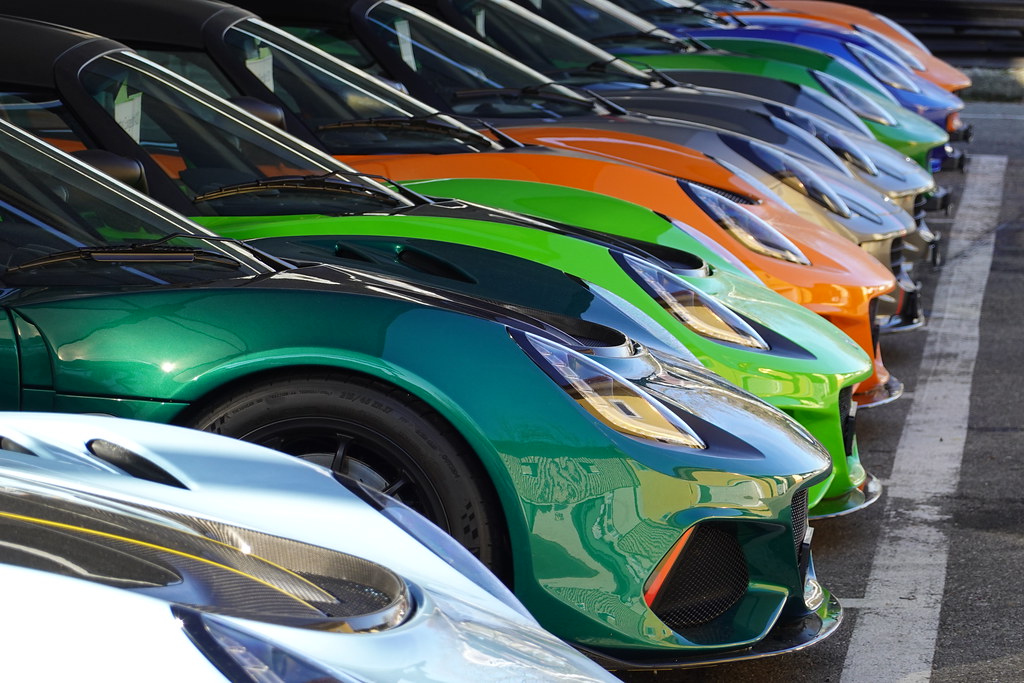
**Emerging Opportunities in Overlooked Segments**
Current market conditions, while challenging for some established segments, concurrently create compelling opportunities in previously overlooked categories. Diligent research and foresight can yield significant returns. Japanese sports cars from the 1990s, for instance, offer a strong value proposition, combining advanced engineering, robust reliability, and a relatively accessible price point. Similarly, European sports sedans from the 1980s and 1990s represent another potentially undervalued segment. Identifying cars with compelling stories, advanced engineering, or cultural impact that haven’t yet achieved full collector recognition is key, offering better risk-adjusted returns than many blue-chip classics.
**Geographic and Demographic Considerations**
Understanding regional preferences and evolving demographic trends is increasingly vital for effective classic car investment. European cars, for example, tend to perform more strongly in coastal markets with historical ties to European motoring culture. Conversely, American muscle cars generally maintain stronger appeal in domestic markets. Crucially, deciphering demographic trends provides invaluable insight into future appreciation. Younger collectors, reshaping the market, often prefer cars from their formative years, particularly from the 1980s and 1990s, and show greater appreciation for Japanese and accessible European models. This generational shift demands adaptability from serious participants.
**Long-Term Market Outlook**
The classic car market, far from being static, appears to be entering a more mature and sophisticated phase, characterized by selective appreciation rather than broad-based gains. This new era presents a remarkable diversity of models, spanning nearly every motoring era, from emerging classics poised for recognition to established icons offering surprising value. This inherent diversity creates abundant opportunities for informed buyers, while simultaneously demanding greater expertise, patience, and selectivity.
Future appreciation within this evolving market will depend less on mere scarcity or speculative hype, and more on a vehicle’s intrinsic qualities. Factors such as engineering significance, profound cultural importance, and the sheer quality of the driving experience will emerge as primary arbiters of long-term value. Cars offering compelling ownership experiences, rich historical significance, and a tangible connection to automotive excellence are those most likely to sustain and even increase in value. Conversely, those acquired purely as short-term investments, lacking these deeper attributes, may struggle significantly.
Ultimately, the market’s evolution towards greater sophistication and a more nuanced understanding of value profoundly benefits serious collectors and passionate enthusiasts. While it may temper the aspirations of pure speculators, this shift fosters a healthier, more sustainable collector car market. It’s a marketplace where knowledge, genuine passion, and meticulous, careful selection are not just rewarded, but are absolutely essential for success, ensuring the enduring appeal of these magnificent machines for generations to come.
Car Model Information: 2018 Mercedes-Benz E-Class E 300
Name: Ford Mustang
Caption: 2018 Ford Mustang GT 5.0
Aka: Ford T5 (Germany)
Manufacturer: Ford Motor Company
Production: March 1964 – present
ModelYears: 1965–present
Class: Unbulleted list
BodyStyle: Unbulleted list
Layout: Front-engine, rear-wheel-drive layout
Categories: 1970s cars, 1980s cars, 1990s cars, 2+2 coupés, 2000s cars
Summary: The Ford Mustang is an American automobiles manufactured and marketed by Ford since 1964, as Ford’s longest nameplate in continuous production. Currently in its seventh generation, it is the fifth-best selling Ford car nameplate. The namesake of the “pony car” automobile segment, the Mustang was developed as a highly styled line of sporty coupes and convertibles derived from existing model lines, initially distinguished by its pronounced “long hood, short deck” proportions.
Originally predicted to sell 100,000 vehicles yearly, the 1965 Mustang became the most successful vehicle launch since the 1927 Model A. Introduced on April 17, 1964 (16 days after the Plymouth Barracuda), over 400,000 units were sold in its first year; the one-millionth Mustang was sold within two years of its launch. In August 2018, Ford produced the 10-millionth Mustang; matching the first 1965 Mustang, the vehicle was a 2019 Wimbledon White convertible with a V8 engine.
The success of the Mustang launch led to multiple competitors from other American manufacturers, including the Chevrolet Camaro and Pontiac Firebird (1967), AMC Javelin (1968), and Dodge Challenger (1970). It also competed with the Plymouth Barracuda, which was launched around the same time. The Mustang also had an effect on designs of coupes worldwide, leading to the marketing of the Toyota Celica and Ford Capri in the United States (the latter, by Lincoln-Mercury). The Mercury Cougar was launched in 1967 as a unique-bodied higher-trim alternative to the Mustang; during the 1970s, it included more features and was marketed as a personal luxury car.
From 1965 until 2004, the Mustang shared chassis commonality with other Ford model lines, staying rear-wheel-drive throughout its production. From 1965 to 1973, the Mustang was derived from the 1960 Ford Falcon compact. From 1974 until 1978, the Mustang (denoted Mustang II) was a longer-wheelbase version of the Ford Pinto. From 1979 until 2004, the Mustang shared its Fox platform chassis with 14 other Ford vehicles (becoming the final one to use the Fox architecture). Since 2005, Ford has produced two generations of the Mustang, each using a distinct platform unique to the model line.
Through its production, multiple nameplates have been associated with the Ford Mustang series, including GT, Mach 1, Boss 302/429, Cobra (separate from Shelby Cobra), and Bullitt, along with “5.0” fender badging (denoting 4.9 L OHV or 5.0 L DOHC V8 engines).
Get more information about: Ford Mustang
Buying a high-performing used car >>>
Brand: Ford Model: Mustang GT
Price: $19,544 Mileage: 57,939 mi.
Read more about: Beyond the Big Blocks: Unearthing 14 Forgotten 1980s GM Muscle Cars That Command Attention Today
An informed approach, leveraging a deep understanding of these shifting tides, will not only protect your investment but also enrich your passion for these magnificent machines. The classic car market remains a vibrant, albeit more complex, landscape—one that continues to offer immense rewards for those who navigate it wisely.

